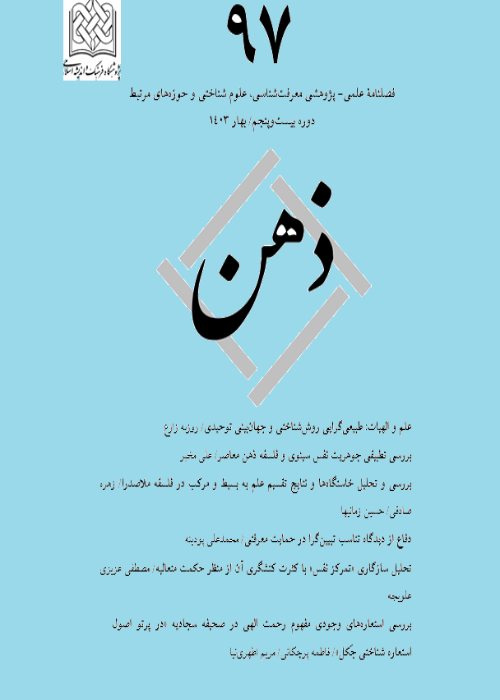Image Schemas of the Story of Prophet Ibrahim (peace be upon him) in the Quran Using Johnson’s Theory of Cognitive Linguistics
One of the most important branches of cognitive semantics is image schemas. These schemas are proposed by Mark Johnson (1987) in the book “Body in Mind”. According to this theory, Johnson has studied the corporeal knowledge of man. Johnson considered the container, path, and force schemas as the most important schemas. These schemas are considered as a kind of sensory experience. Because they have arisen from the perceptual mechanisms of sense and connect the world of the mind to the outside world. This mechanism has a high function due to the objectification of abstract concepts in religious texts. Regarding this purpose, the present study using Johnson schemas in cognitive linguistic approach examines the story of Prophet Ibrahim (AS) because of its importance on different parts of life, such as religious topics, the existence of God, how to deal with enemies and belief in resurrection, confidence and trust in God. Although few researches have addressed these issues outside of cognitive linguistics. Therefore, the current study answers the following questions according to the story of Prophet Ibrahim (AS) in the Holy Quran and Johnson's linguistic theory:1.In what conceptual frequency are image schemas presented in the Quranic story of Prophet Ibrahim (AS)? Which types of image schemas has the greatest contribution in conveying the concepts and accurate understanding of the verses of the story of Prophet Ibrahim (AS)?
To answer the research questions, the image schemas of the story of Prophet Ibrahim (AS) have been discussed using the descriptive-analytical method. In the current study, all the verses of this story have been examined and they were adapted to the Johnson's three schemas (container, path, and force). Then, each verse has been placed in its own image schemas. At the end, the table and diagram of the relevant schemas were drawn.
“Considering the obtained results, from the total number of verses in the story of Prophet Ibrahim (PBUH), the path schema has the largest number of verses compared to the container and force schemas. Then the highest frequency was for force and container schemas, respectively.
In the story of Prophet Ibrahim (PBUH), container schemas were used to convey different concepts such as: fear and torment. The concepts of dealing with polytheists and receiving rewards for obedience and servitude were drawn with a path schemas. Also, concepts such as going astray and surrendering to the divine command have been displayed with the help of force schemas.
- حق عضویت دریافتی صرف حمایت از نشریات عضو و نگهداری، تکمیل و توسعه مگیران میشود.
- پرداخت حق اشتراک و دانلود مقالات اجازه بازنشر آن در سایر رسانههای چاپی و دیجیتال را به کاربر نمیدهد.


